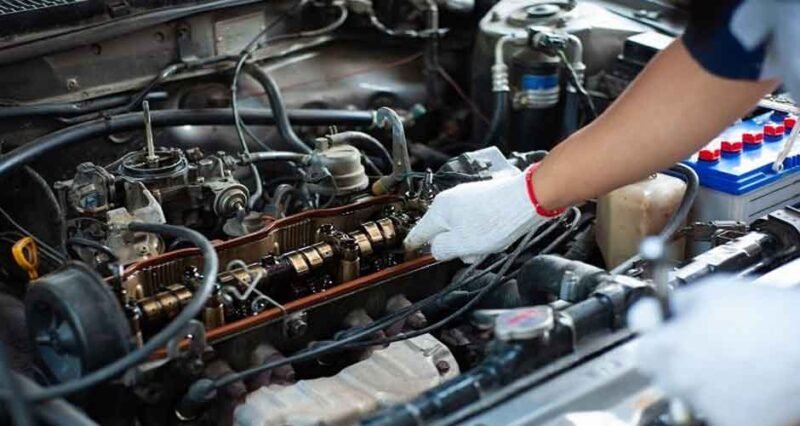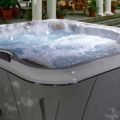
When servicing a Duramax engine, one critical aspect that should never be overlooked is the type of coolant used. The intricate design of these engines, which include models like the lly, lbz, lb7, lml, lmm, and l5p, requires the use of the correct engine coolant to ensure optimal performance and longevity. Using the wrong type of coolant in a Duramax engine can lead to many issues, such as reduced heat transfer capabilities, increased corrosion risk, and possible chemical reactions, which could compromise the engine’s health and functionality.
Given that Duramax engines are prominently used in vehicles that demand high performance and reliability, maintenance guidelines recommend using the right Duramax coolant type to prevent potential damage. Inappropriate coolant can lead to operational inefficiencies and, over time, may cause significant engine damage that is costly to repair. The risks associated with using the wrong coolant are not merely under-the-hood concerns; they translate into real-world consequences that could affect the overall vehicle performance and safety.
Key Takeaways
- Using incorrect coolant in Duramax engines can cause severe engine damage.
- A specific Duramax coolant type is recommended to maintain engine health.
- Regular maintenance and correct coolant selection are crucial for vehicle performance.
Impact of Incorrect Coolant on Duramax Engines
Using the wrong type of coolant in a Duramax engine can lead to severe consequences ranging from reduced heat protection to significant physical damage. Each subsection below delves into how incorrect coolant can negatively impact a Duramax engine.
Thermal Inefficiency and Overheating
Incorrect coolant can cause thermal inefficiency in Duramax engines, compromising the coolant’s ability to absorb and dissipate heat. This inefficiency can result in overheating, which is perilous for the engine’s internal components, such as pistons and head gaskets. Overheating can also strain the water pump, leading to premature failure.
Chemical Damage and Corrosion
The wrong coolant may lack the necessary corrosion inhibitors, such as silicates and phosphates, to protect against corrosion within the engine’s cooling system. For instance, aluminum components found in Duramax engines, like the radiator and engine block, can suffer corrosion without adequate protection. Additionally, incompatible additives can cause chemical damage to gaskets and seals, leading to leakage and loss of coolant.
Physical Damage and Deposits
An inappropriate coolant formula can create a gel-like substance that leads to blockages in the cooling system, specifically within narrow passages where heat transfer is vital. These deposits can cause physical damage to the engine by inducing friction and restricting flow, culminating in hot spots that can crack or warp engine components. Moreover, using traditional coolant instead of the recommended OAT (Organic Acid Technology)-based DexCool in Duramax diesel can precipitate these issues, compromising the long-term health of the engine.
Coolant Selection and Maintenance Guidelines for Duramax Engines
Selecting the correct coolant and adhering to maintenance routines are critical for the longevity and performance of Duramax diesel engines.
Choosing the Right Type of Coolant
Duramax engines generally require a specific Duramax coolant type formulated to be compatible with their unique components. The manufacturer recommends using Organic Acid Technology (OAT) or Hybrid Organic Acid Technology (HOAT) coolants. These coolants are free of silicates and phosphates, which can lead to the formation of gel-like substances in the cooling system. It is crucial to avoid inorganic acid technology (IAT) coolants that were common in older models but are not suited for modern Duramax engines such as the LB7, LMM, and L5P. Using the wrong type of coolant can cause damage to the water pump radiator hoses and contribute to injector failure.
- OAT Coolant: Typically orange or dark red, designed for newer diesel engines.
- HOAT Coolant: A mixture of OAT and traditional inorganic anticorrosives, often yellow or turquoise.
Routine Maintenance and Coolant Replacement
Duramax diesel engines demand regular maintenance to preserve the efficacy of their cooling systems. The vehicle manufacturer’s guide should be the first point of reference to determine the recommended coolant replacement intervals. As part of regular maintenance, one should always inspect levels in the coolant reservoir and look for signs of contamination, which can lead to corrosion or mineral deposit build-up. It’s essential to use the same extended-life coolant that was originally filled to maintain compatibility and avoid any detrimental chemical reactions.
- Regular Checks: Monitor coolant levels during oil changes or at specified intervals.
- Coolant Changes: Follow the vehicle’s recommended schedule, usually every 30,000 to 50,000 miles.
Recognizing Symptoms of Coolant Issues
Awareness of the symptoms indicating coolant issues in a Duramax engine can prevent severe damage. If the engine runs hotter than usual, this could signal a low coolant level, leaks, or a malfunctioning injection pump. A compromised air intake system, turbo mouthpiece, or lift pump can influence engine temperature. Coolant with a peculiar odor or appearance, like a milky or oily texture, can indicate the presence of a head gasket leak or oil contamination. Similarly, if animals are attracted to the coolant, this could suggest that the coolant has propylene glycol, which is enticing but hazardous to wildlife. Immediate attention to these signs is required to safeguard against significant engine troubles.
- Visual Inspection: White residue or signs of leaks around coolant hoses.
- Smell and Color: Antifreeze should not smell burnt, and discoloration indicates contamination.
Conclusion
Utilizing the incorrect coolant in a Duramax engine can lead to significant damage and costly repairs. The wrong type of coolant may cause corrosion of engine components, compromise the effectiveness of the cooling system, and increase the chances of overheating. Vehicle owners must choose the appropriate coolant to maintain engine health and performance. Regular maintenance and professional advice are advised to prevent any issues related to coolant misuse.


